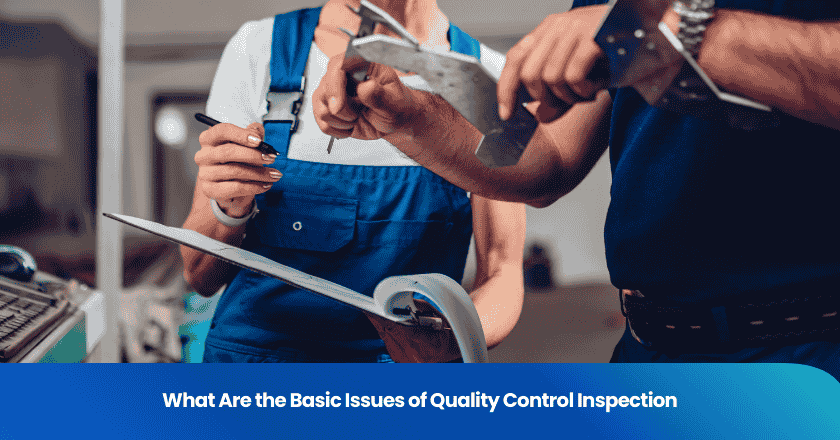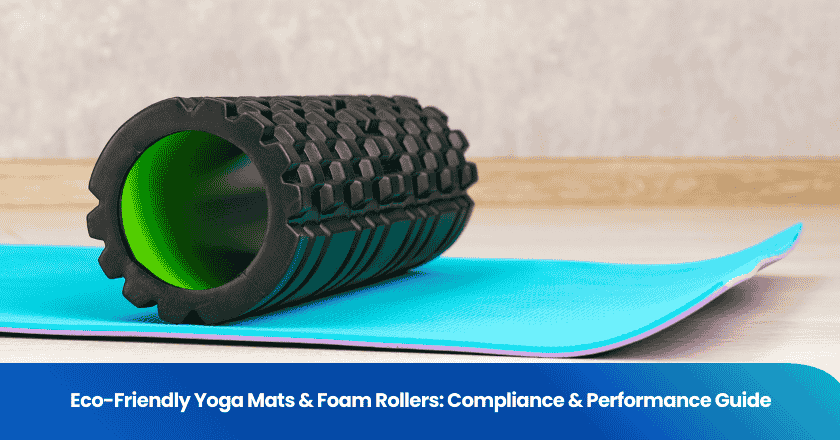
You often face several basic issues during quality control inspection. The most common problems include:
- Unclear standards
- High inspection costs
- Data analysis challenges
- Shipment approval decisions
- Inconsistent parts and materials
- Complex assembly processes
- Human error
- Lack of real-time monitoring
These issues can directly affect your ability to deliver high-quality products. The impacts on quality, safety, and customer satisfaction are significant:
| Impact Type | Description |
|---|---|
| Product Quality | Defects from poor sourcing and assembly lower quality and performance. |
| Safety | Defective products can threaten safety and trigger recalls. |
| Customer Satisfaction | Low quality damages trust and reduces repeat business. |
If you want to ensure high-quality products, you need to understand what are the basic issues of quality control inspection and address them early.
Key Takeaways
- Unclear standards can lead to inconsistent testing results. Review and define clear quality standards to avoid confusion.
- High inspection costs can impact your budget. Streamline processes and automate where possible to reduce expenses.
- Effective complaint handling builds customer trust. Use feedback to improve your products and resolve issues quickly.
- Regular training and maintenance are essential. Keep your team updated and equipment calibrated to prevent quality issues.
- Identifying root causes of problems prevents recurrence. Use methods like the 5 Whys to address underlying issues effectively.
Common Quality Control Issues
You encounter several quality control issues during testing that can disrupt your operations and impact product outcomes. The most frequent problems include poor understanding of the product, inadequate training, managing sub-suppliers, high inspection costs, and human error. Addressing these challenges early helps you maintain high standards and avoid costly mistakes.
Unclear Standards and Specifications
Unclear standards and specifications create confusion during testing. When you lack precise guidelines, inspectors may interpret requirements differently. This leads to inconsistent testing results and increases the risk of defective products reaching customers. You might face product recalls and damage to your reputation if you do not address this issue.
To prevent these problems, you should:
- Review design and quality specifications thoroughly before testing.
- Use a detailed product inspection checklist to guide your team.
- Define clear, measurable, and achievable quality standards.
- Train your staff regularly to ensure everyone understands the requirements.
- Automate testing processes where possible to reduce human error.
Data Analysis Challenges
Analyzing testing data presents its own set of quality control issues. You must manage data from global supply chains, comply with changing regulations, and balance cost with quality. Rapidly evolving consumer expectations add more pressure to your testing teams.
| Technique | Benefit |
|---|---|
| Statistical Analysis | Understand testing workflows and identify areas for improvement. |
| Machine Learning | Forecast potential failures and maintenance needs. |
| Data Visualization | Gain insights into testing data and prioritize resources. |
| Predictive Analytics | Manage risks by foreseeing potential issues. |
| Real-time Monitoring | Access up-to-the-minute information on testing status. |
| Performance Metrics | Measure efficiency and effectiveness in testing. |
You can improve your testing outcomes by adopting these quality control methods and tools.
High Inspection Costs
High inspection costs remain one of the most common quality issues in testing. Manual testing increases variability and costs. Regulated industries, such as automotive and medical devices, face stricter standards, which drive up expenses. Product recalls and compliance failures add further financial risks.
You can reduce costs by:
- Using data to identify bottlenecks in testing processes.
- Conducting testing on the production floor to save time and money.
- Streamlining supplier management to ensure quality materials.
- Training employees to improve testing efficiency.
- Committing to continuous improvement in your quality control methods.
A balanced approach helps you optimize both quality and cost, ensuring your testing remains effective without overspending.
What Are the Basic Issues of Quality Control Inspection
Shipment Approval Decisions
You face critical choices when deciding whether to approve a shipment. These decisions directly influence customer satisfaction and the rate of product returns. You must weigh several key criteria before making a final call:
- Strength of your relationship with the manufacturer or supplier
- Severity of any defect found during inspection
- Value of the order at stake
- Urgency of the shipment for your business or customer
Once you review the inspection report, you typically follow a clear process:
1. Decide whether to approve the shipment.
2. Request corrective actions if you find issues that can be fixed.
3. Reject the batch if the defects are severe or cannot be corrected.
Quality control is a vital strategy for reducing returns. Implementing thorough inspection processes before items leave the warehouse ensures that only products that meet quality standards reach customers.
You can see the impact of these decisions in the following table:
| Benefit | Description |
|---|---|
| Reduced Returns | Pre-shipment inspections can significantly reduce the number of returns and customer complaints by identifying defects before shipping. |
| Enhanced Customer Satisfaction | Ensuring high-quality products reach customers enhances their satisfaction and reduces costs associated with returns. |
Consistently delivering high-quality products leads to higher customer satisfaction. Satisfied customers often become repeat buyers and recommend your products, which drives business growth. By understanding what are the basic issues of quality control inspection, you can make better shipment approval decisions and protect your reputation.
Identifying Root Causes
You need to identify the root causes of quality problems to prevent them from recurring. Surface-level fixes rarely solve the underlying issues. Several proven methods help you get to the heart of the problem:
| Method | Description |
|---|---|
| PROACT | A structured method involving five steps: Preserve, Order, Analyze, Communicate, and Track to identify and eliminate root causes of quality control failures. |
| 5 Whys | A simple technique that involves asking 'Why?' repeatedly to drill down to the root cause of a problem. |
| FMEA | A detailed analysis method that uses hypothetical questions to explore cause-and-effect relationships for specific issues. |
You can also use Fault Tree Analysis and Affinity Diagrams to support your investigation. Root cause analysis (RCA) identifies fundamental flaws in your processes, systems, and behaviors. It enables you to learn from mistakes and prevent them from happening again. RCA drives lasting change when you integrate it with a culture of continuous improvement.
- RCA helps you save costs by identifying and resolving issues promptly.
- You avoid delays in production and manufacturing operations.
- RCA can be used alongside methodologies like Six Sigma to support continuous improvement.
- It enhances your quality assurance initiatives.
When you focus on what are the basic issues of quality control inspection, you create a foundation for long-term improvements in your quality control processes.
Inspector Roles and Responsibilities
Your inspectors play a central role in ensuring effective quality control. Their expertise and attention to detail determine the accuracy and reliability of your inspections. Inspectors must handle a wide range of responsibilities:
| Role/Responsibility | Description |
|---|---|
| Inspection and Testing | Conduct thorough examinations and perform various tests on products, materials, or components. |
| Documentation and Sampling | Record findings and select random samples to evaluate quality. |
| Defect Identification | Spot flaws and determine if they need correction. |
| Quality Standards Adherence | Ensure compliance with industry regulations and safety guidelines. |
| Testing Equipment Operation | Operate tools like calipers and gauges for precise assessments. |
| Collaboration | Work with production teams to communicate quality issues. |
| Root Cause Analysis | Investigate underlying causes of quality issues to prevent recurrence. |
| Process Improvement | Provide feedback to enhance production processes. |
| Final Inspection | Perform last checks to ensure products meet standards before distribution. |
| Reporting | Generate reports summarizing inspection results and corrective actions. |
| Training | Train new employees on quality control procedures. |
| Continuous Monitoring | Engage in ongoing monitoring of production processes. |
| Safety Regulations | Ensure compliance with occupational health and safety guidelines. |
You must ensure that your inspectors regularly calibrate and maintain their tools and machinery. This regular maintenance is essential for providing reliable test results. Skilled inspectors bring consistency across inspections. You should establish clear, comprehensive criteria based on industry standards or customer expectations. Personnel performing inspections must be highly trained and knowledgeable about the products and standards. The right tools and measuring equipment must be used to accurately assess product quality.
By focusing on what are the basic issues of quality control inspection, you empower your inspectors to deliver reliable results and maintain high standards. Their expertise supports your entire quality control system and helps you achieve your business goals.
Quality Control Process Challenges
Inadequate Documentation
You face significant risks when documentation falls short in your quality control process. Missing signatures, incomplete records, or unauthorized changes can lead to compliance issues and regulatory penalties. The FDA often cites documentation failures as a top reason for compliance warnings. For example, using erasable markers on production records or keeping torn batch records can make your data unreliable. Inaccurate documentation also makes it difficult to trace defects back to their source, which slows down corrective actions.
Tip: Always define clear quality standards and document every step of your inspection. Use specific, measurable criteria and keep records accurate and secure.
Common documentation pitfalls include:
- Incomplete laboratory records
- Missing or unauthorized signatures
- Easily altered production data
You can improve your quality control by establishing precise product specifications, setting clear inspection methods, and creating a strong reporting system for defects.
Lack of Standardized Checklists
Without standardized checklists, your quality control inspections become inconsistent. You may miss defects, and product reliability suffers. Packaging quality can vary between batches, leading to customer complaints and regulatory problems. A structured checklist ensures that every inspection covers the same critical points, reducing the risk of errors.
To develop effective checklists, follow these steps:
1. Identify regulatory and internal quality requirements.
2. Analyze gaps between current and desired practices.
3. Create detailed procedures for each quality control task.
4. Review checklists with your team before finalizing.
5. Train staff on checklist use.
6. Gather feedback and audit regularly for improvements.
Note: A well-designed checklist supports a reliable quality control process and helps you maintain high standards across all products.
Misaligned Processes
Misaligned processes create confusion and lead to defects in your products. When your standard operating procedures lack clarity or your communication channels break down, you see more errors and inconsistencies. Poor supplier management and insufficient quality control measures also contribute to these issues.
| Cause of Misalignment | Impact on Product Quality |
|---|---|
| Inadequate standard operating procedures | Defects and inconsistencies in product quality |
| Poor communication channels | Errors and misunderstandings in task execution |
| Insufficient quality control measures | Undetected defects, lower product quality |
| Ineffective supplier management | Increased production errors |
You can align your quality control process with your organizational goals by setting clear objectives, defining roles, and establishing detailed inspection procedures. Continuous monitoring and regular reviews help you adapt and improve your processes over time.
Managing Common Quality Issues
Supplier and Sub-supplier Management
You rely on suppliers and sub-suppliers to deliver consistent quality. Weak oversight can introduce defects and disrupt your production. Regular evaluations and close cooperation with reliable suppliers help you maintain high standards. You should align supplier oversight with the risk each vendor poses to your product quality, safety, and compliance. Good quality control in supplier management streamlines your processes and prevents crises by catching problems early.
Tip: Make suppliers part of your quality systems to improve communication and transparency.
Here are best practices for managing supplier quality:
1. Maintain a supplier performance scorecard to track key metrics.
2. Build closed-loop systems for corrective actions.
3. Audit suppliers regularly to ensure compliance.
4. Assess the cost of poor supplier quality and identify cost recovery opportunities.
| Quality Issue | Problem Description | Solution Description |
|---|---|---|
| Poor understanding of product | Workers may not grasp specifications, leading to errors. | Provide clear documentation and comprehensive training. |
| Lack of checklists | Missed steps in production processes. | Develop and use detailed checklists for every process. |
Complaint Handling and Rework
Customer complaints and rework can quickly increase costs and damage your reputation. Poor complaint management leads to more rework and waste, which reduces profit margins. Effective complaint handling builds customer trust and loyalty. You should view complaints as valuable feedback that reveals areas for improvement.
- Use feedback loops to gather and act on customer input.
- Apply root cause analysis to address underlying issues, not just symptoms.
- Resolve complaints quickly to increase loyalty and reduce financial losses.
Note: A structured complaint management process strengthens your business by correcting failures and preserving trust.
Maintenance and Training Gaps
Maintenance and training gaps often cause recurring quality control problems. A shortage of skilled workers and rapid technology changes make ongoing quality control training essential. Regular equipment calibration and preventive maintenance help you avoid unexpected issues and maintain accuracy.
| Evidence Type | Description |
|---|---|
| Education and Training | Ongoing training improves skills and understanding of equipment. |
| Quality Maintenance | Integrates maintenance with quality control to prevent defects. |
You should schedule regular reviews of policies, gather feedback from technicians, and conduct audits to improve maintenance practices. Quality control training for your team ensures everyone stays updated and supports a culture of continuous improvement.
You play a vital role in maintaining quality control throughout your operations. Addressing quality control issues early helps you deliver consistent quality and meet customer expectations. Clear standards, robust processes, and regular inspection form the backbone of effective quality control.
- Proactive quality control ensures products meet standards every time.
- Automated compliance systems help you respond 40% faster to regulatory changes.
- Effective quality management practices can reduce non-compliance penalties by 70%.
- Cloud-based systems foster a culture of continuous improvement and quality compliance.
You should review and update your quality control practices regularly to keep your inspection process strong and your products reliable.
FAQ
What is the main goal of quality control?
You aim to ensure products meet defined quality standards. Quality control helps you detect defects early and maintain consistency. This process protects your reputation and builds customer trust.
How does quality control differ from quality assurance?
Quality control focuses on identifying defects in finished products. Quality assurance covers the entire process to prevent defects. You use quality control to check results, while quality assurance improves the process.
Why is documentation important in quality control?
Accurate documentation supports traceability and accountability. You need clear records to track quality issues and corrective actions. Good documentation strengthens your quality control system and simplifies audits.
How can you improve quality control in your operations?
You can train your team, use standardized checklists, and review processes regularly. Quality control improves when you set clear standards and monitor performance. Regular inspection ensures you catch problems before products reach customers.
What role does inspection play in quality control?
Inspection verifies that products meet your quality requirements. You use inspection to identify defects and confirm compliance with standards. This step is essential for effective quality control and customer satisfaction.
Grow your business with TradeAider Service
Click the button below to directly enter the TradeAider Service System. The simple steps from booking and payment to receiving reports are easy to operate.



